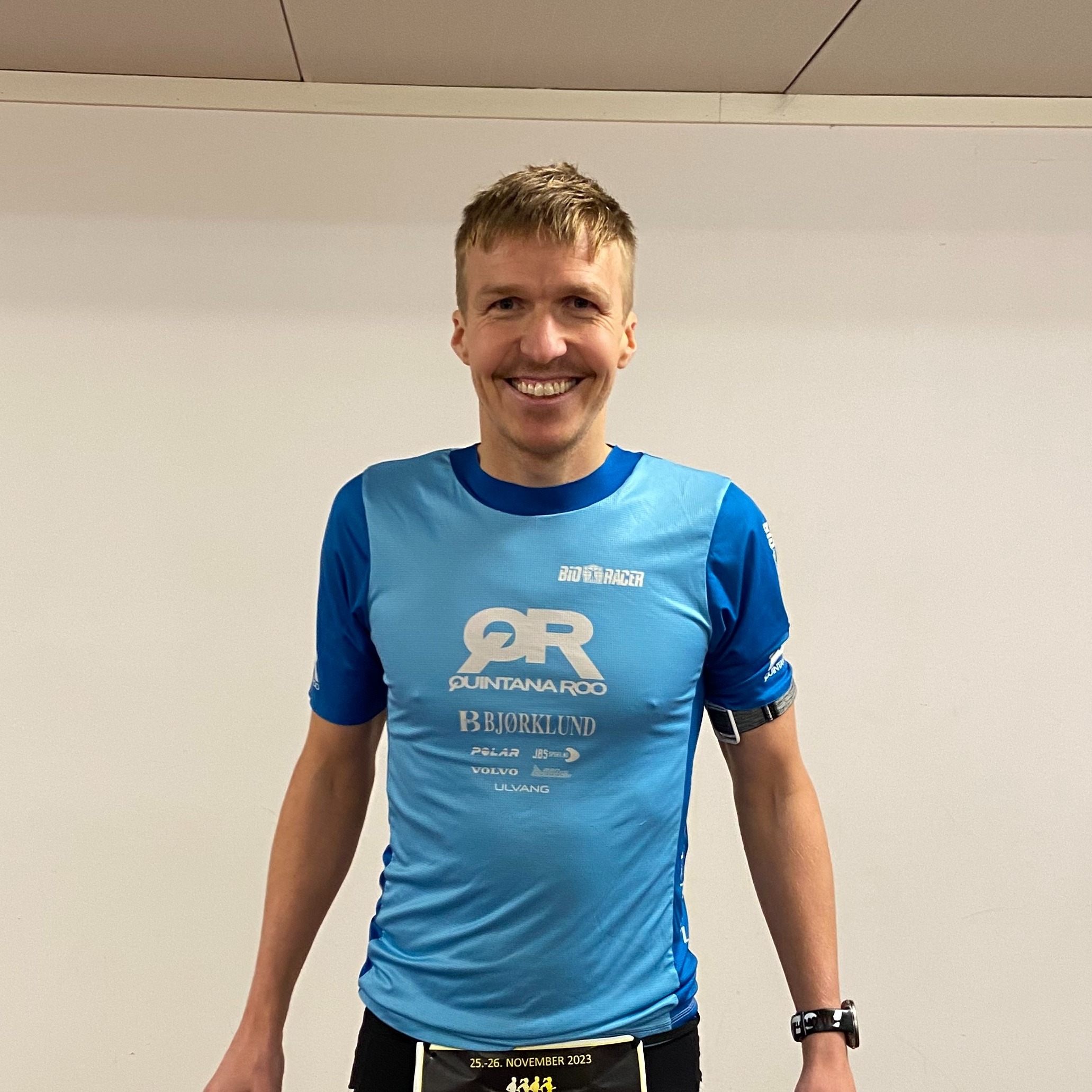
Allan Hovda
Bislett 24 Hour Challenge
Allan's headline numbers
Allan's strategy
Fueling
Carbohydrate is the main fuel you burn when racing. Failing to fuel properly is a leading cause of underperformance in longer races.
Allan implemented his most thorough carb loading protocol yet by keeping a detailed record of his consumption in the last few days ahead of the event. This allowed him to reach the general guidelines of ~8g per kilogram of bodyweight by eating a total of ~540g of carbohydrate. Over the first seven hours, whilst running at a high intensity (4:30min/km), Allan averaged just over 70g/h which was similar to his last 24 hour run. This involved some hours at a lower consumption, including the first hour where he let himself settle in and only took ~34g of carb, and higher hours like the ~91g/h he hit during hour three. In comparison to 2021, Allan planned to rely more on Gels, Chews and Cola because he’s found that he struggles to take on real foods when working at such a high relative intensity. Allan also wore a Supersapien’s device to continuously monitor his glucose levels. It suggested that his feeding strategy adequately sustained him over the first quarter of the event (staying above 120mg/dL). Half way through hour seven Allan began walking as he felt overheated and ‘feverish’ which he puts down to having a virus in the days leading up to the event. At this point, he turned to Cola and real foods including sweets and broth to try and continue fueling alongside Chews. He kept pushing on until nine hours in when he decided to stop.
Hydration
Taking on board an appropriate amount of fluid and sodium is essential to maintaining blood volume and supporting the cardiovascular effort needed to perform on race day.
Whilst the absolute amount of sodium and fluid consumed per hour is important, it’s critical to consider these in relation to each other. This is known as 'relative sodium concentration' and it’s expressed in milligrams per litre (mg/L). How much sodium you’re taking in per litre of fluid is more important than the absolute amount taken in per hour.
Sweat sodium concentration (mg/L) is largely genetically determined and remains relatively stable. Knowing how salty your sweat is enables you to replace a good proportion of your sweat losses, which can range from 200-2,000mg/L.
Given Allan’s losses are Very High (1,412mg/L), nailing his hydration strategy remains important, even when it’s Mild.
Learn moreWith a few members of the PF&H Sports Science team crewing Allan, he was provided with plain water, PH 1500 (Drink Mix), or boiled, flat Cola on request. Allan was also supplied with Electrolyte Capsules alongside his water at a concentration similar to his sweat sodium losses. He primarily drank to thirst throughout, whilst trying to hit his pre-planned goal of over 500ml per hour. He executed this plan effectively, drinking ~466ml/h during the first six hours and ~732ml/h for the final 3 hours where he was trying to manage his core temperature. A CORE body temperature sensor indicated Allan’s core temperature increased by ~1.23℃ (34.2ºF) to hit values above 38.5℃ (101ºF) after hour six which aligns with his “feeling of overheating” and could explain why his performance began to deteriorate. Research has shown high temperatures can reduce aerobic performance and increase perceptions of effort. But, trained endurance athletes have previously been shown to tolerate core temperatures over 40℃ (104ºF) including Allan who has previously recorded training sessions at these temperatures. Despite cooling himself with ice cubes most laps, Allan’s overheating and fever-like symptoms ultimately caused him to stop.
Supporting Allan’s subjective feeling of being happy with his hydration strategy, he peed three hours into the run which indicated euhydration and adequate fluid replacement. Bodyweight measurement also allowed us to determine that Allan’s fluid replacement over the first six hours was replacing a good proportion of his losses (around 70%), without over-drinking and risking hyponatremia.
Caffeine
Beyond the Three Levers of Performance (carb, sodium and fluid), caffeine is one of only a few substances that is proven to improve performance for most endurance athletes as it can help stave off mental and physical fatigue.
After his pre-race coffee, Allan had planned to leave caffeine out of his strategy until later in the race to fight his circadian rhythm. However, when he started walking he tried a range of strategies to “dig himself out of the hole” including drinking cola and having two caffeine tablets in an attempt to boost his perceived energy levels. This was what Allan felt he needed at the time, but in an event of this length we would normally recommend much smaller, more frequent doses later into the event to increase and maintain blood caffeine levels.
How Allan hit his numbers
Here's everything that Allan ate and drank on the day...
Allan's weapons of choice
Final thoughts
Allan's full stats
Data Confidence?
There is a high level of confidence in the accuracy in the data. The numbers presented are believed to be a very close reflection of reality. There may still be one or two estimations made in the data (an inescapable part of field data) but there is reason to believe that these are accurate and that possible error has been kept to a minimum. It is data that has been collected and recalled as accurately as is possible given the uncontrolled settings/circumstances.